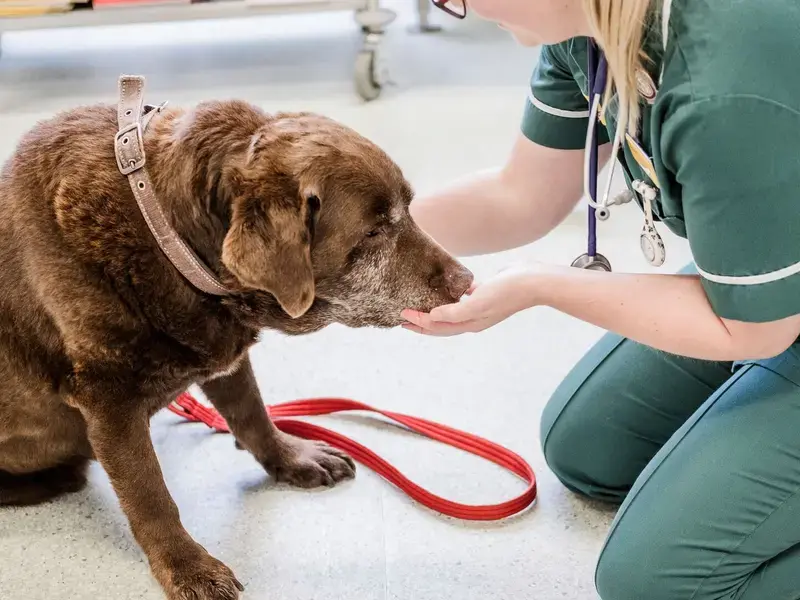HOW TO BECOME…
a dog friendly clinic?

“Aren’t we already?” you might ask. Well, Dogs Trust have teamed up with the British Veterinary Behaviour Association (BVBA) to help veterinary clinics to create a standard for helping owners and their dogs to have the best veterinary experience possible – and to be recognised for doing so with accreditation.
Senior RVN at The Old Golfhouse Vets in Norfolk Sally Linghorn (SL) chatted to RVN colleague Kayleigh Whittaker (KW), following the practice’s achievement of the new accreditation, to find out what it means for a practice, its clients and its patients.
SL: Who is behind this accreditation?
KW: The Dogs Trust and The Veterinary Behaviour Association (BVBA) have teamed up to use their expertise in creating a course to help create a positive experience for dogs with a veterinary setting.
SL: What process do you need to go through to gain the accreditation?
KW: There is an online course, consisting of nine modules, covering everything from an introduction to species-typical behaviour and communication to guidance on preparing the clinical environment to reduce stress and promote positive experiences. This takes approximately four-and-a-half hours and can be completed over three months.
Once you’ve completed the modules, there’s also a quiz, and some evidence which needs to be submitted. For example, we submitted a walk-around video of our reception area, demonstrating handling and approach, and noting positives and room for improvement in the space to help reduce anxiety. There is then a membership fee to pay.
SL: What are the key aims of creating a dog friendly practice explored in the course?
KW: It isn’t to convert us into “mini behaviourists” but to enable us as veterinary professionals and colleagues to recognise common dog anxieties and the principles of the behaviour behind what we see. It helps us to advise clients on preparing their pets in advance of appointments, and how to instil and maintain calm in the dogs themselves.
We want to reduce negative association, creating a less frightening time for them in practice – even for a the simplest of weight checks in reception – with a lasting memory of a happy experience. The worst that can happen is that a dog’s unhappy behaviour can put off or prevent owners from seeking veterinary care and advice when their dog might need it.
SL: What do you achieve at the end of the course?
KW: I was provided with window stickers for the practice, as well as a certificate and badge to identify me as the go-to RVN for dog behaviour help.
I am now the ambassador for canine behaviour at our practice. This means that I’m a key contact in-practice for communicating news and ideas provided by Dogs Trust and BVBA as they provide us with access to interactive CPD, library resources, social media posts and a discussion board.
SL: What next steps are you planning in order to enforce the accreditation?
KW: I was also provided with Dog Friendly Clinic induction materials for getting all members of the practice inducted so that we are all on-board with the same ideas.
Reception are responsible for one of the key chunks of time in a dog’s (and their owner’s) experience with us. My next step is therefore to work with our Head Receptionist to communicate to all of his team about an induction to the scheme which they can complete in the form of a video. Once all receptionist colleagues have watched this, I will be putting dates in the diary as soon as possible for mini lunch-and-learns to discuss the principles of the scheme, how to communicate the idea of the scheme to clients who ask about it, and how to reconsider the way in which they approach dogs in the waiting room, or how they advise or look after anxious clients with anxious dogs.
Further information
For further information on the Dogs Trust Dog Friendly Clinic scheme visit www.dogfriendlyclinic.org.uk .
